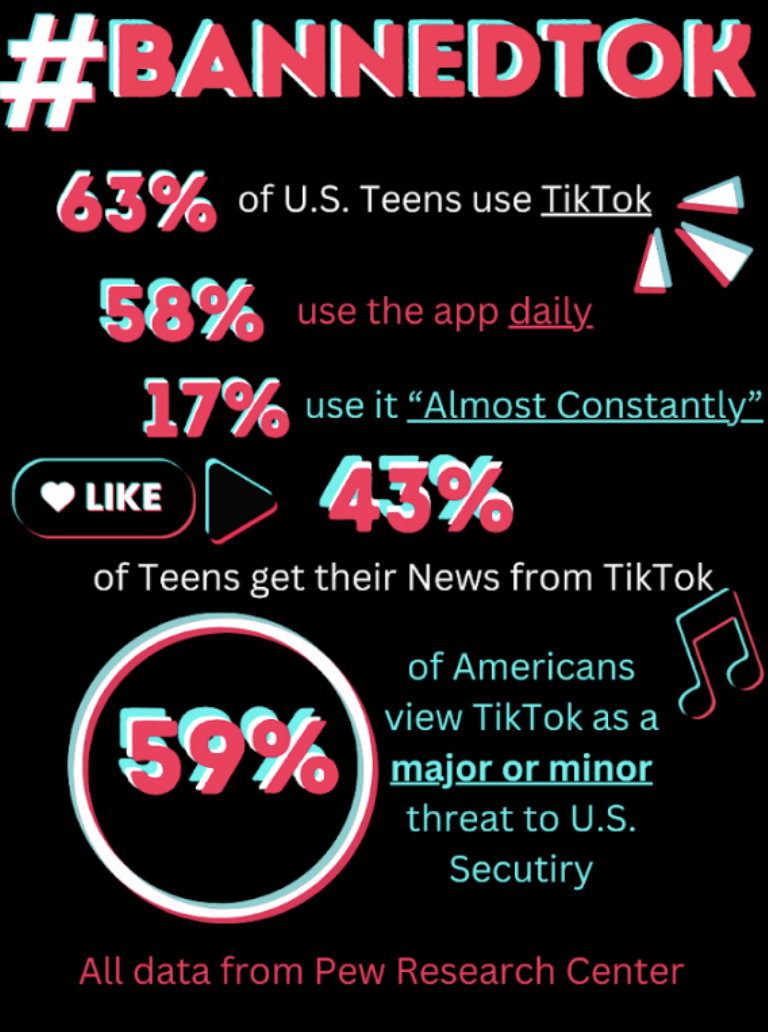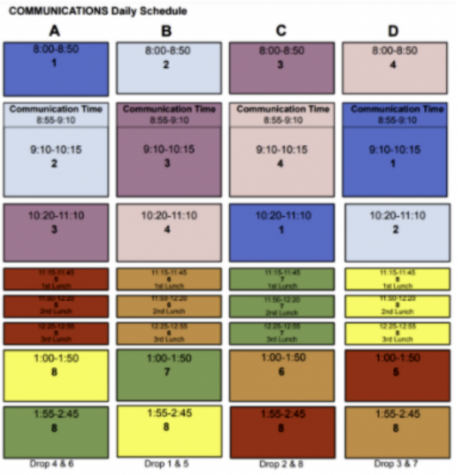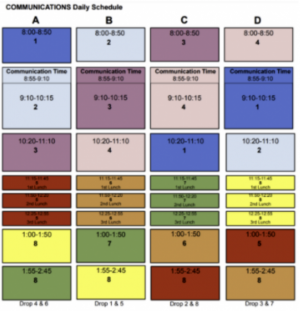CON: Return to six-period schedule warrants negative response
December 2, 2021
Students, bleary-eyed from a late night of homework, grip steaming coffee as they run to their class. Confused freshman frantically check their schedules trying to figure out what the day’s schedule is. The bell rings and teachers immediately start the lesson, determined to fit all the content into fifty or less minutes. As Staples switched back from the block schedule established during the 2020-2021 school year, both the student body and administration are feeling the negative effects.
The current schedule is as follows – students are enrolled in eight classes and have six a day, meaning two are dropped. Each class is 50 minutes, aside from one longer 80 minute period, and classes further rotate on a four-day A-D rotation that repeats throughout the year. This is different from the schedule instated for the 2020-21 school year, during which Staples had four 80 minute classes a day: periods 1-4 on A days and 5-8 on B days. This previous schedule was not just easier to follow, but allowed students to learn more and spread out their work evenly.
With the previous schedule, students had two days to complete homework instead of one, allowing them to spread out their rigorous workload. The current schedule adds to the growing stress levels of Staples students and should not be in effect.
— Abbie Goldstein ’22
First off, 50 minute periods are not nearly enough time for teachers to teach a thorough lesson. In many of my classes, teachers either cannot finish or cram in the content with little time to spare. The 80 minute periods that we had last year gave teachers enough time to teach the lesson with enough time for a collaborative element. Last school year, I was able to talk with my peers and conduct in-class activities. This year, most of my classes have become lecture-based with no time for interaction with others.
Furthermore, the longer periods allowed more to be accomplished in the allotted time, giving students less homework. With the previous schedule, students had two days to complete homework instead of one, allowing them to spread out their rigorous workload. The current schedule adds to the growing stress levels of Staples students and should not be in effect.
Another element of the block schedule that was extremely beneficial and should remain in effect is flex time. Flex time was a 30 minute period of time after school that allowed students to receive assistance from teachers and connect with them. This block was extremely helpful when you had to miss a class, and allowed students to connect and build relationships with teachers. Flex time should be reinstated to the schedule to provide this support system to the students.
The new schedule is impractical and makes students unnecessarily stressed about their schoolwork. There is little time to meet with teachers, double the amount of homework and barely enough class time to grasp the content. It is detrimental to keep it in effect and Staples should revert back to the block schedule.
























































